decoration: Sam Schellink
photo and collection: David Aardewerk
Vase with four handles
decoration Sam Schellink (1904)
photo: Proportio Divina, Arnhem
Distinguished finesse
The company’s first egg shell porcelain series was presented with fanfare in 1899, at the Haagse Kunstkring (The Hague Artists’ Society). A journalist of the Algemeen Handelsblad wrote: [...] ‘Now the moment had come to [...] move the curtain aside. And the new product, shining and smiling, beckoned us, its distinguished finesse and fragility set against a background of blue-grey velvet. Before us was a range of products: saucers, coffee and tea services, vases, mugs and dishes, all in purest milky white and decorated with stylized chrysanthemums, tulips and other flowers. Enraptured we drew closer and saw for ourselves that its fine structure could compete for translucence and lightness with its famous examples from Japan, Saxony and France. Such a wealth of colours, such tasteful decoration.’


We have made grateful use of the following:
Yvonne Brentjens: Rozenburg, plateel uit Haagse kringen (1883 – 1917), Zwolle, 2008.
Arno Weltens: Theo Colenbrander (1841 – 1930), Zwolle, 2014.
Marjan Boot: Rozenburg 1883-1917, geschiedenis van een Haagse fabriek, Zeist, 1983.
Kok was well aware of international developments in porcelains and the use of underglazes. He believed Rozenburg should join this trend and began secret experiments. He imported new raw materials from abroad and built ovens capable of generating higher temperatures. Despite some initial setbacks, the required results were achieved.
Now that they were capable of making porcelain, new models had to be designed. Among his contacts, Kok found a young fellow still training in one of the country’s schools for applied arts: P. Ritter. The earliest Rozenburg product that looks somewhat like egg shell porcelain is a coffeepot probably designed by Ritter. Even though Kok would continue to claim to be the company’s only designer of egg shell porcelain, it seems that Ritter contributed significantly in the background.
decoration: R. Hartgring (1902)
photo: Proportio Divina
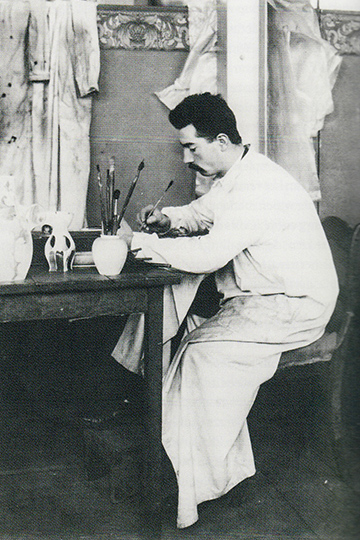
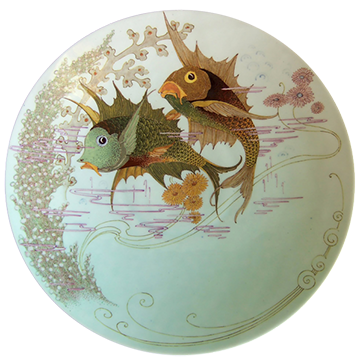
photo: Gemeentearchief Den Haag
Schellink and Hartgring
In 1895 general manager Vosmaer was found to have salaried himself rather too well, and he was fired. Jurriaan Kok found himself the only director in the company, and he acquitted himself successfully. The number of employees rose to a hundred, sixty of whom were painters. The company’s new models did well, both among critics and in consumer sales. The new decorations of insects, reptiles, birds and fishes were a success. In this period Sam Schellink and W.P. Hartgring, famous delftware painters, worked for Rozenburg.
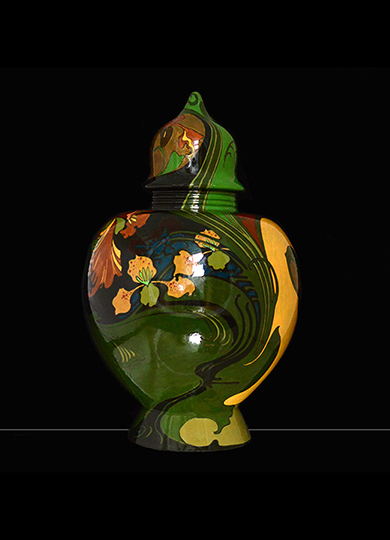
Egg shell porcelain was produced over a fifteen-year period, starting in 1899. We know of 315 models, some of which are completely unique while others provide variants on a set theme.
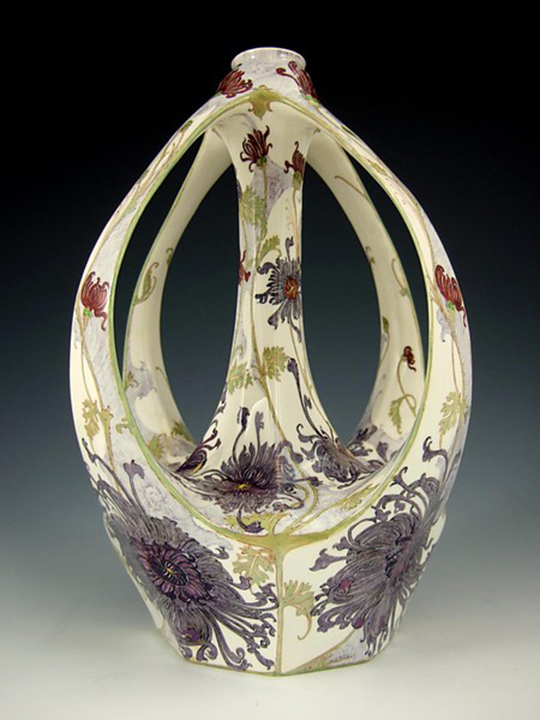
Art Nouveau tea service of egg shell porcelain, a gift from the Haagse Porcelein en Aardewerkfabriek Rozenburg to Her Majesty Queen Wilhelmina on the occasion of her marriage to Prince-Consort Hendrik in 1901. Collection: Palace Het Loo, Apeldoorn, the Netherlands; on loan from Stichting Koninklijke Verzamelingen, Den Haag.
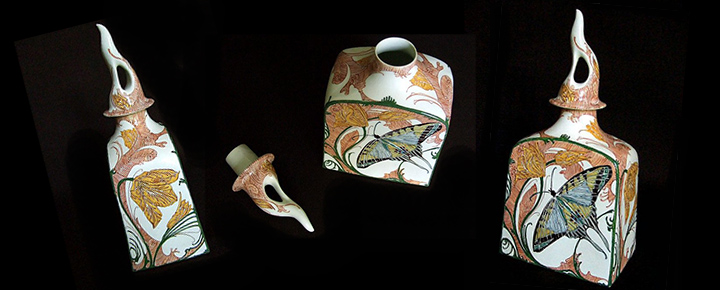
Tea Can,
decoration S. Schellink,
1899
images:
Proportio Divina
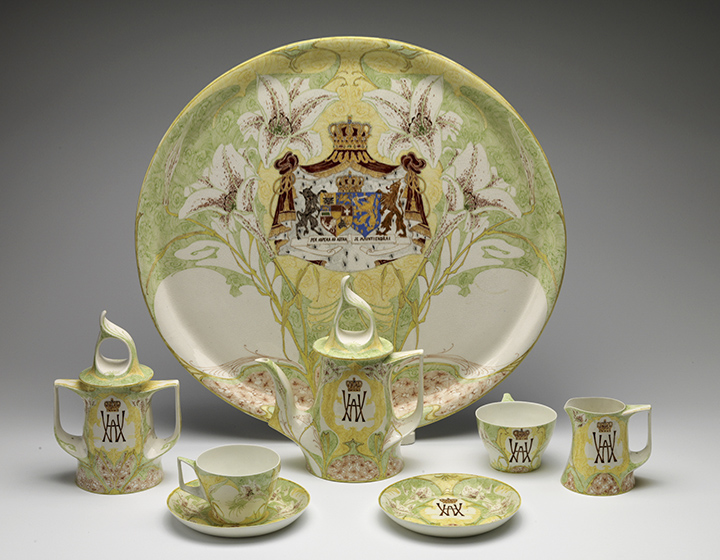
Vosmaer’s changes required someone with insight into artistic matters. Jurriaan Kok was mentioned, the architect of the new factory buildings and therefore well acquainted with the company. Also, he had had successful wainscoting tiles of his own design made by Rozenburg. In the spring of 1894 he was contracted as aesthetics advisor. While this may sound like a desk job, he turned it into something quite the contrary. Kok involved himself in all kinds of technical matters and personally created a number of new designs. His diligence was much appreciated and after a few months the company appointed him aesthetics director.
Rozenburg (approximately till 1914)
page 3
